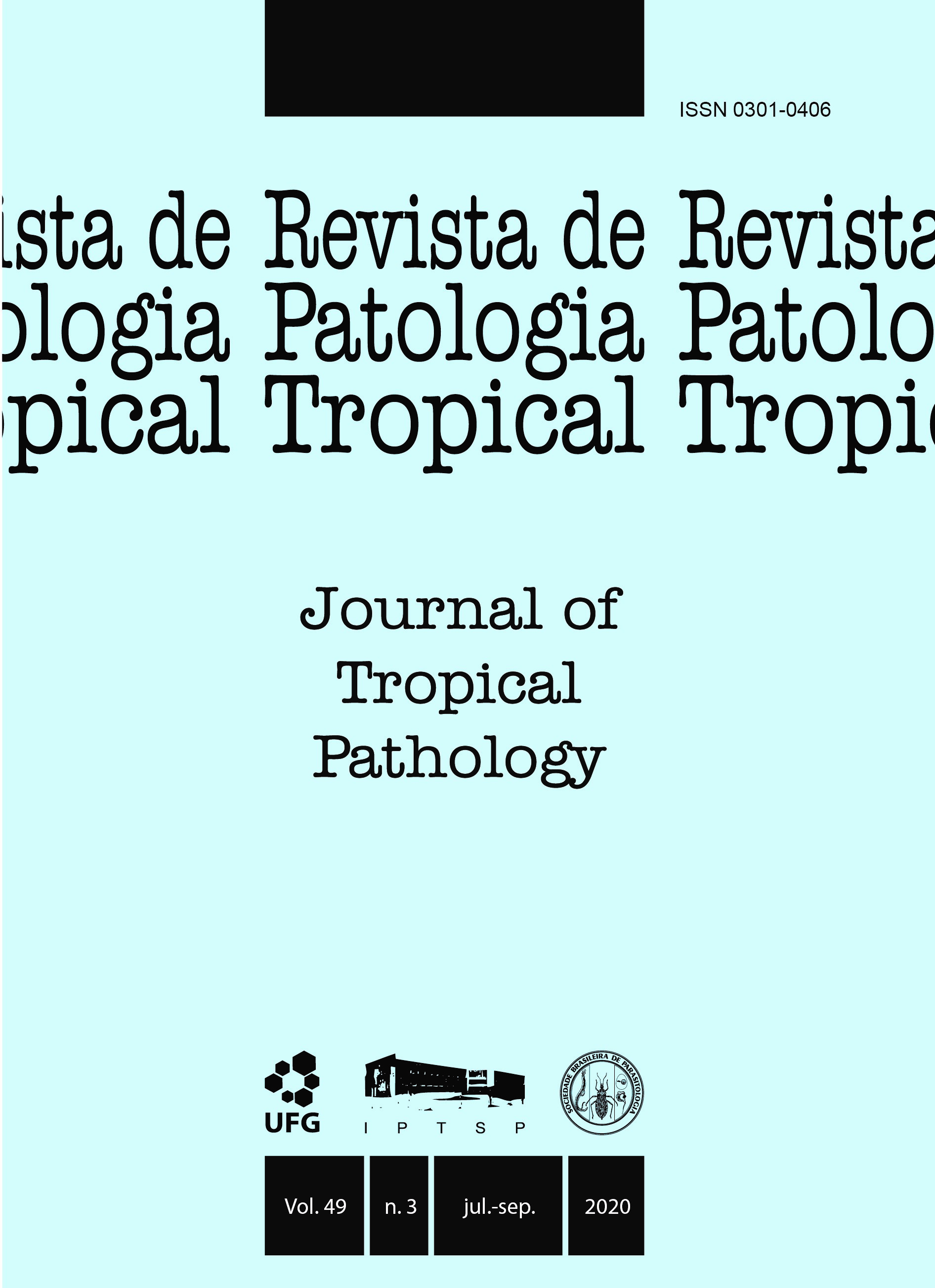Epidemiology and predictors of occurrence of SCHISTOSOMA MANSONI infection in a low-endemicity area in northeast Brazil
DOI:
https://doi.org/10.5216/rpt.v49i3.62455Abstract
In Latin America 96% of the cases of schistosomiasis occur in Brazil in low-socioeconomic status populations. The epidemiological characteristics and occurrence predictors of Schistosoma mansoni infection were determined in the Bananeiras community, located in Capistrano, a town in Ceará state, Brazil. Sanitary, environmental, socioeconomic, and behavioral data were collected using a semi-structured questionnaire. An investigation to assess S. mansoni infection was conducted using the Kato-Katz and Point-of-Care Circulating Cathodic Antigen (POC-CCA) methods. From the 258 subjects were analyzed, 54.3% (n=140) were women, median age 30 years. Thirty-three (12.8%) individuals were positive by either egg- and/or CCA-positivity. The highest positivity rate was found in the 30-39 year old group. There was no piped water supply, sewage network or municipal refuse collection service. Most individuals were illiterate or had not finished elementary school (66.3%). About 29.1% of the families had a monthly income below one Brazilian minimum wage and 91.1% reported contact with natural water sources. We found an association between infection and age group of 20-40 years, illiteracy, household with 7 inhabitants or more, household with up to 3 rooms and an outhouse. Contrarily, being 40 years old or older and household with up to 6 inhabitants were not risk factors. Schistosomiasis remains a public health problem in this municipality, evidencing a strong association with low socioeconomic conditions and high vulnerability. These findings reinforce the importance of identifying the factors associated with the infection for more effective guidance in actions in control programs targeting schistosomiasis prevention and control.
KEY WORDS: Schistosomiasis; Schistosoma mansoni; epidemiology; predictors; low endemicity;
urim antigen.
Downloads
Downloads
Published
How to Cite
Issue
Section
License
The manuscript submission must be accompanied by a letter signed by all authors stating the full name and email address, confirming that the material has not been published or is under consideration for publication elsewhere, and agreeing to transfer copyright in all media and formats for Journal of Tropical Pathology. The authors will not be paid for published articles. They are solely responsible for the content of those articles, even if the Editor holds the right to adjust them to the norms of the journal.
The reviewers will not be paid for the peer review process.

